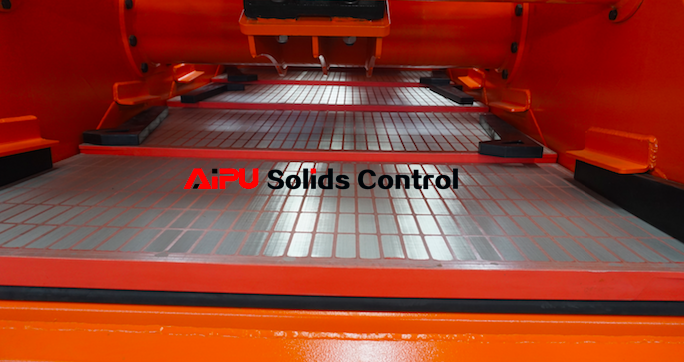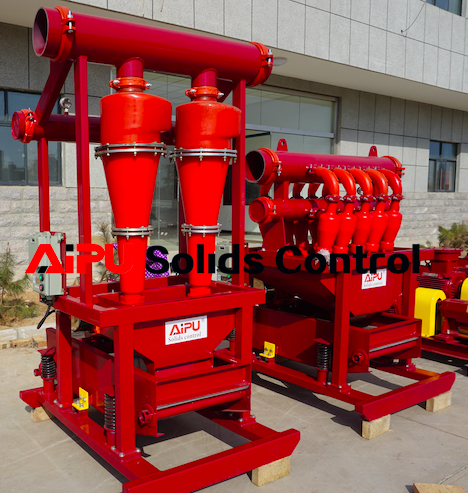Rigsite solids control equipment evaluation tips
Rigsite solids control equipment evaluation is the method for determining the cost-effectiveness of individual pieces of solids control equipment when using a water-base mud (WBM). If the equipment and system arrangement meets the operation guidelines described below, the operational performance is assumed to be adequate and correct. The question remains as to whether each piece of mechanical solids removal equipment is cost-effective as applied.
Do not bypass the screens or operate the shale shaker with torn screens; these are the main causes of plugged hydrocyclones. Fine mesh screens constructed with coarse mesh backing cloth have the advantage of providing some screening even when the fine mesh tears
Almost shaker presently are adjustable deck, when we operate it please watch for solids degradation or grinding at positie uphill deck angles, especially above +3 degrees uphill. if stationary piles of lumps of solids are found in the pool, excessive grinding will occur, especially with softer solids.
Degasser suction should be located about 1 foot off bottom in a well-agitated compartment. Use top equalization between the degasser suction and discharge compartments. The power mud for the eductor jet for a vacuum degasser should come from the degasser discharge compartment.
Install enough hydrocyclones to process 100% of the mud volume entering the hydrocyclone suction compartment or to handle the maximum solids loading, whichever is larger. Use correct fluid routing with bottom equalization. The hydrocyclone overlfow should be returned to the next compartment downstream from the hydrocyclone suction compartment. The hydrocyclone discharge compartment must back flow to the hydrocyclone pump suction compartment.
If needed, install centrifugal pump suction screens to keep out trash and large solids. When large solids plug the hydrocyclones underflow, this indicates some of the drilling fluid did not pass through a shaker screen well. Thus a suction screen on pump is necessary
Wighted and unweighted mud will be a bit different. If unweighted mud, we only use mud cleaner as desilter (Blank off screen) unless environmental constrints or economics dicate the use of screens. Weighted mud use mud cleaners when the shale shaker does not reduce the API sand content.
Also the oil bas mud and base fluid-based mud request different operation on mud cleaners.
Shale shaker arrangement at rigsite solids control system
Treat 100% of the mud circulating volume through the available units. No whole mud or other recycled fluids should enter the active system without first passing through the screens. Run finest mesh shaker screens practical considering economics. If economical, run screens having an image analyzer D100 of 70 microns or letter(per API RP13C). Replace or patch torn screens at onceDo not bypass the screens or operate the shale shaker with torn screens; these are the main causes of plugged hydrocyclones. Fine mesh screens constructed with coarse mesh backing cloth have the advantage of providing some screening even when the fine mesh tears
Almost shaker presently are adjustable deck, when we operate it please watch for solids degradation or grinding at positie uphill deck angles, especially above +3 degrees uphill. if stationary piles of lumps of solids are found in the pool, excessive grinding will occur, especially with softer solids.
Degasser after shaker
Degasser here is the vacuum degasser or centrifugal degasser. it should be located downstream from the shale shaker and prior to any equipment requiring a centrifugal feed pump. The degasser suction should be installed downstream of the sand trap and upstream of any centrifugal pump in the system.Degasser suction should be located about 1 foot off bottom in a well-agitated compartment. Use top equalization between the degasser suction and discharge compartments. The power mud for the eductor jet for a vacuum degasser should come from the degasser discharge compartment.
Hydrocyclones separator
Oilfield hydrocyclones are available in sizes ranging from 1 inch to 12 inches. Cones equal to or larger than 6 inches are called desander cone while cones smaller than 6 inches are termed desilters. Hydrocyclones can be used on either weighted or unweighted drilling fluids. The underflow can be discarded screened, and centruged, or screened/centrifuged depending upon the application, the value of the liquid phase, and environmental considerationsInstall enough hydrocyclones to process 100% of the mud volume entering the hydrocyclone suction compartment or to handle the maximum solids loading, whichever is larger. Use correct fluid routing with bottom equalization. The hydrocyclone overlfow should be returned to the next compartment downstream from the hydrocyclone suction compartment. The hydrocyclone discharge compartment must back flow to the hydrocyclone pump suction compartment.
If needed, install centrifugal pump suction screens to keep out trash and large solids. When large solids plug the hydrocyclones underflow, this indicates some of the drilling fluid did not pass through a shaker screen well. Thus a suction screen on pump is necessary
Mud cleaners effectiveness assurance
Since mud cleaner is a combination of hydrocyclones and a shaker, many of the guidelines given for shakers and hydrocyclone apply to mud cleaners. Always follow specific manufacturer's recommended maintenance practice.Wighted and unweighted mud will be a bit different. If unweighted mud, we only use mud cleaner as desilter (Blank off screen) unless environmental constrints or economics dicate the use of screens. Weighted mud use mud cleaners when the shale shaker does not reduce the API sand content.
Also the oil bas mud and base fluid-based mud request different operation on mud cleaners.









